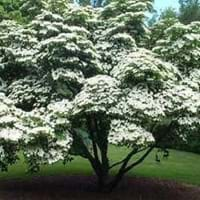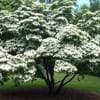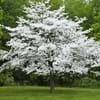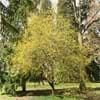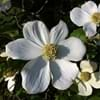Life Span
Perennial
Perennial
Origin
North America, United States, Northeastern United States, Mid-Atlantic United States, Southeastern United States, North-Central United States, Canada
California
Types
Chinese kousa dogwood, Blue Shadow kousa, Weaver's Weeping dogwood
Not Available
Number of Varieties
Not Available
Habitat
gardens, Near ponds, Wet Woods
Chaparral, River side
USDA Hardiness Zone
4-8
7-10
Sunset Zone
2a, 2b, 3a, 3b, 4, 5, 6
H1, 4, 5, 6, 7, 8, 9, 10, 11, 12, 14, 15, 16, 17, 18, 19, 20, 21, 22, 23, 24
Habit
Spreading
Upright/Erect
Minimum Width
Not Available
Flower Color
White, Ivory
White, Yellow
Flower Color Modifier
Bicolor
Bicolor
Fruit Color
Purple, Black
Green, Tan
Leaf Color in Spring
Green
Gray Green
Leaf Color in Summer
Green
Gray Green
Leaf Color in Fall
Burgundy
Gray Green
Leaf Color in Winter
Not Available
Light Green
Leaf Shape
Oval
Lance shaped
Plant Season
Spring, Summer, Fall, Winter
Spring, Summer
Sunlight
Partial Sun, Partial shade
Full Sun
Type of Soil
Clay, Loam
Loam, Sand
The pH of Soil
Acidic
Neutral, Alkaline
Soil Drainage
Well drained
Well drained
Bloom Time
Late Spring, Early Summer
Early Spring, Spring, Late Spring, Early Summer, Summer
Tolerances
Cold climate, Soil Compaction
Drought
Where to Plant?
Ground
Ground
How to Plant?
Seedlings, Stem Cutting
Cuttings, Seedlings
Plant Maintenance
Medium
Medium
Watering Requirements
Allow to dry out slightly between watering, occasional watering once established
Needs watering once a week, Water well when planted
In Summer
Lots of watering
Lots of watering
In Spring
Moderate
Moderate
In Winter
Average Water
Average Water
Soil pH
Acidic, Neutral
Neutral, Alkaline
Soil Type
Loam, Moist, Well drained
Loam, Sand
Soil Drainage Capacity
Well drained
Well drained
Sun Exposure
Full Sun, Partial Sun, Partial shade
Full Sun
Pruning
Prune if you want to improve plant shape, Prune lower leaves, Prune once the plant is tall enough
prune nearly to the ground in late fall
Fertilizers
Fertilize in early spring, Mulch
organic fertlizers
Pests and Diseases
Crown rot, Leaf spot, Red blotch, Whiteflies
Verticillium Wilt
Plant Tolerance
Humidity, Light Frost
Drought
Flower Petal Number
Single
Single
Showy Foliage
Yes
Not Available
Showy Bark
Not Available
Yes
Foliage Texture
Medium
Not Available
Foliage Sheen
Glossy
Not Available
Attracts
Birds, Butterflies, Hummingbirds, Squirrels
Bees, Birds, Butterflies
Allergy
allergic conjunctivitis, Headache, Pollen
no allergic reactions
Aesthetic Uses
Beautification, Cottage Garden, Showy Purposes
Showy Purposes
Beauty Benefits
For treating wrinkles, Makes teeth white, Making cosmetics, Skin cleanser
Not Available
Environmental Uses
Forms dense stands, Nesting sites for birds, Shadow Tree, soil stabilisation
Air purification
Medicinal Uses
Acne, Antibiotic, Appetite enhancer, Cough, Diuretic, Emollient, Nutrients, Weight loss
antimicrobial, Astringent, Gum Problems, Stomach pain
Part of Plant Used
Bark, Flowers, Fruits, Leaves
Flower Stalk
Other Uses
Application in Handicrafts, Decoration Purposes, Grown for shade, Used as Ornamental plant
Used as Ornamental plant
Used As Indoor Plant
No
No
Used As Outdoor Plant
Yes
Yes
Garden Design
Feature Plant, Foundation, Mixed Border
Feature Plant, Groundcover, Mixed Border, Wildflower
Botanical Name
CORNUS alternifolia
ROMNEYA coulteri
Common Name
Alternate-leaved Dogwood, Pagoda Dogwood
Matilija Poppy
In Hindi
Cornus
Matilija Poppy
In German
Wechselblättriger Hartriegel
Matilija Poppy
In French
Cornus
Matilija Poppy
In Spanish
Cornus alternifolia
Matilija amapola
In Greek
Cornus
Matilija παπαρούνας
In Portuguese
Cornus
Matilija Poppy
In Polish
Dereń
Matilija Poppy
In Latin
Cornus
Matilija Poppy
Phylum
Magnoliophyta
Magnoliophyta
Class
Magnoliopsida
Magnoliopsida
Order
Cornales
Papaverales
Family
Cornaceae
Papaveraceae
Clade
Angiosperms, Asterids, Eudicots
Angiosperms, Eudicots
Tribe
Not Available
Not Available
Subfamily
Not Available
Papaveroideae
Number of Species
Not Available
Season and Care of Pagoda Dogwood and Matilija Poppy
Season and care of Pagoda Dogwood and Matilija Poppy is important to know. While considering everything about Pagoda Dogwood and Matilija Poppy Care, growing season is an essential factor. Pagoda Dogwood season is Spring, Summer, Fall and Winter and Matilija Poppy season is Spring, Summer, Fall and Winter. The type of soil for Pagoda Dogwood is Clay, Loam and for Matilija Poppy is Loam, Sand while the PH of soil for Pagoda Dogwood is Acidic and for Matilija Poppy is Neutral, Alkaline.
Pagoda Dogwood and Matilija Poppy Physical Information
Pagoda Dogwood and Matilija Poppy physical information is very important for comparison. Pagoda Dogwood height is 550.00 cm and width 490.00 cm whereas Matilija Poppy height is 120.00 cm and width Not Available. The color specification of Pagoda Dogwood and Matilija Poppy are as follows:
Pagoda Dogwood flower color: White and Ivory
Pagoda Dogwood leaf color: Green
Matilija Poppy flower color: White and Yellow
- Matilija Poppy leaf color: Gray Green
Care of Pagoda Dogwood and Matilija Poppy
Care of Pagoda Dogwood and Matilija Poppy include pruning, fertilizers, watering etc. Pagoda Dogwood pruning is done Prune if you want to improve plant shape, Prune lower leaves and Prune once the plant is tall enough and Matilija Poppy pruning is done prune nearly to the ground in late fall. In summer Pagoda Dogwood needs Lots of watering and in winter, it needs Average Water. Whereas, in summer Matilija Poppy needs Lots of watering and in winter, it needs Average Water.
